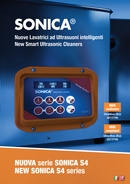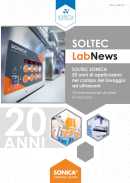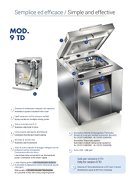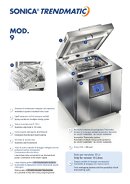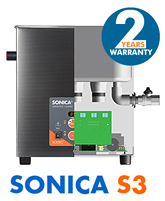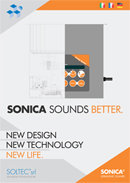Making a complete upper and lower prosthesis for an elderly patient
Submitted by soltec-admin on Fri, 04/30/2010 - 18:22
The purpose of this article is to explain how a complete prosthesis was made in a dentist's surgery working together with a dental laboratory.
Introduction
In this article we will show the procedure followed in order to make a complete prosthesis for an 88-year-old patient who had previously suffered great physical and psychological difficulty in trying to get used to a new prosthesis made using traditional methods.
In order to meet this patient's requirements and solve her problem Doctor Gerli worked very closely with Mr Dario Cattaneo, owner of a dental laboratory.
Case History
The patient is a lady of 88 who had worn a complete prosthesis from thirty years which for various reasons she had never had replaced. The most obvious reason was probably that the patient had originally changed the way she chewed because of the fit of the prosthesis and now such a long time this way of chewing had become natural.
Since both the upper and lower prostheses were extremely worn and no longer possessed the correct bite or exhibited the right dynamic or functional characteristics, we decided to make two new complete prostheses using traditional methods.

Patient wearing her old prostheses |

Patient smiling, wearing her old prostheses |

Patient's old prostheses
These were then fitted and at that point in time the patient was pleased with the way the two prostheses met during chewing and she was also please with their appearance. However, after only a few hours she complained of great difficulty in chewing and very noticeable differences compared with her old prosthesis. After further analysis the following problems emerged:
- the back teeth of the new prostheses were too pointed when compared with the old prostheses which had been worn down over time (the difference measured about 8mm)
- the patient was so used to chewing differently with her old prostheses that she was unable to adapt to the new ones, even though her bite was lifted in gradual phases
- the position of both the upper and lower teeth was difference and this meant the patient was unable to make certain mandibular-condyle movements which she previously used to do. Over the years the gum and bone tissue has changed a great deal which made anchoring the prostheses extremely difficult, especially for the lower teeth. This has led to a progressively looser fit in the mouth which in turn has resulted in a very personal way of chewing. The smaller grip was taken into account in the design of the new lower prosthesis but nevertheless after a few days gum ulcers appeared which made it impossible for the patient to chew food.
After many attempts at relining the prosthesis, the patient spent some time trying to adapt to the new teeth but after considering how long it would take to get used to the new teeth she expressed the wish for two new prostheses identical to those she had worn for thirty years.

Patient wearing her new prostheses |

Patient smiling with the new prostheses |

New ptrotheses made using traditional methods
It was therefore decided to made exact copies of the old prostheses in new material.
Duplication procedure
The duplication process was carried out partly in the dentist's surgery and partly in the dental laboratory.
An impression was made directly in the dentist's surgery using special MDP flask and slow-setting alginate.
- Alginate mixed with 75% of usual water content is used in order to slow the setting process and obtain a firmer set. This is put in the lower base. The old prosthesis is positioned in the base teeth down and when the alginate has hardened any excess is removed with a scalpel. A thin layer of vaseline paste is then applied and the alginate is left to harden completely.
- Then the upper base is filled with alginate (prepared in the same proportions as above) and a little alginate is placed in the hollow of the lower base. The flask is then screwed shut. The flask is self-centring so the positioning is exact, and any alginate in excess is pushed out of the holes at the back of the flask.
- When the alginate has hardened the flask is opened and the prosthesis can be removed and immediately returned to the patient.
- The flask containing the impression is then sent to the dental laboratory where a new prosthesis can be made extremely quickly.

prothesis positioned in the MPD flask |

lower base filled with alginate |

closed MDP flask |
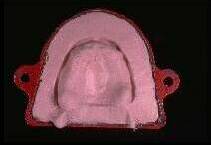
alginate impression of the parts in contact with mucosa |
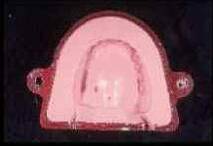
alginate impression of dental arch
N.B. For more about procedure for making a prosthesis in a dental see "Nuovi orientamenti nella costruzione di protesi mobili" by Dario Cattaneo (Ad Labor, Issue N° 3, September 1996) and the MDP flask videocassette.
Materials
It is obvious that an impression made with alginate is not as stable as one made with silicon but using alginate does have the advantage that a patient does not have to go days without a prosthesis while waiting for a new one to be made since it only takes 15 to 20 minutes to make an impression
However it is always best to reline the new prosthesis with a material like Permlastic, Viscogel, Hydrocast or Dinabase and then send it back to the dental laboratory so that it can relined again with greater precision.
It is also possible to reline the prosthesis in the patient's mouth using cold cured resin, but it is important to remember, however, that both hard and soft autopolymer acrylic resins can give off high levels of monomers which may damage tissue on contact.
In the case described above we used Dinabase replaced by resin after seven days in order to avoid and toxic reaction and to greater dynamic-functional stability.

patient wearing exact copy of old prostheses |

patient smiling with exact copy of old prostheses |

exact copy of old prostheses made using MDP system
Conclusion
After a period of adaptation the patient was fully satisfied with the new prostheses. She got back her same smile, had no difficulty pronouncing her words, and more importantly, she experienced the same mandibular-condyle sensations and movements. The overall result was good from the functional and aesthetic point of view and did not have any adverse effect on masticatory ability or surrounding tissue.
- 10272 reads
- Italiano

